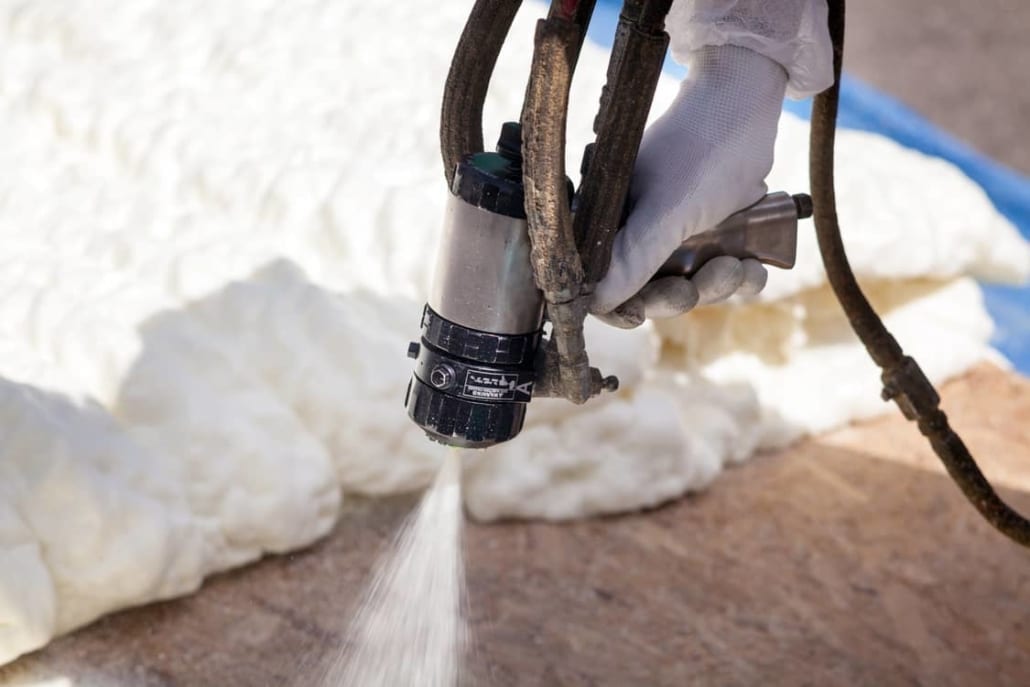How to Keep the Attic Cool in Summer
The southern half of the U.S. sees temperatures above average for the rest of the country much of the year. On a hot day, an unventilated attic can reach a temperature of 150 degrees, which is much warmer than it needs to be. This can cause the HVAC to work overtime just to cool the attic and the home. If this is your situation, you may be wondering how to keep the attic cool. Well, it can be done in many ways, such as using attic ventilation fans, passive vents, insulation, and more. Let’s take a look.
Why This Matters
An overheated attic causes roof shingles to deteriorate and fall apart. Thus, exposing the roof and attic to the outside temperatures and elements. Then, replacing these shingles will be expensive over time. If the home has lighter color shingles, they will reflect more solar radiation and stay cooler. Energy Vanguard reports that the lighter colored shingles can lower the electric bill by 20%. If the shingles are cooler, then the attic will be cool.
If the attic is hotter, a higher electric bill accompanies it as the air conditioning is working overtime and will also cause a 40% increase in your electric bill per month!
How to Fix the Issue of a Hot Attic
Attic Ventilation fans
Attic ventilation fans pull the hot air out of the home to the outside and keep it from coming back in. They keep the attic and home cooler if they are installed properly and sealed. In fact, The University of Floridaconducted a study that proved that having these types of fans lowered the relative humidity, condensation was rare, and the moisture was also removed. However, they are great for the southern climates but not for the northern climates. Also, if the home has proper insulation, they won’t make much of a difference.
Install Passive Vents to Keep the Attic Cool
Passive vents come in three different types: Gable, soffit, and ridge. These vents are also known as “naturally occurring”, meaning that the air comes from the outside, circulates into the attic, and out vents at the top of the attic. These vents are essential for air circulation.
Gable Vents are on the outside of the home and circulate air, especially in extreme climate conditions. Located near the peak of the roof, or on siding, and they allow the warmer air to dissipate. Also, the wind must blow perpendicular so the air can cool down the attic and the house.

Ridge Vents run along the ridge of the roof and allow the warm air to escape at the top of the attic.. They work well with the soffit ventilation which is beneath the eaves and brings in the cooler air. It is essential that the vents are open and not clogged with debris or insulation.

Attic Insulation
It is important to have attic insulation in a home. The insulation is measured with an “R” value, which means the higher the value, the more the attic stays warm. If you have an uninsulated attic, you will be adding an R value of 30-60 of insulation. This is the amount listed for most of Florida according to the Department of Energy site.
Adding Insulation
If you insulation is older, missing, moved, or compressed, it may be a good idea to add more insulation. Adding attic insulation will keep the cool air of the home (or warm air) inside.
When adding insulation, you can foam seal around small cracks at the ceiling drywall, recessed lightings, and top plates of the wall for extra insulation. Be sure to carefully insulate around recessed lightings boxes and chimney flues as in some cases, manufacturers of the flues and lighting boxes will require a gap between the insulation and item. …But there is more on this later.
Reflective Metal Roofing Helps Keep the Attic Cool
This type of roofing is good all over the U.S. However, in colder climates, the roof must seal properly so the moisture from snow and rain does not get in. In fact, metal roofing is also great because it reflects the sun’s energy and reduces the heat that is transferred to the inside of the home. Thus, this will help provide a cool attic and home.
Light Colored Shingles Make for a Cooler Home
Using light colored shingles instead of dark can lower the temps and electric bill by 20% and keep the attic cooler.
Install Radiant Barriers
These barriers are good to use in the warmer climates. Spraying these on the attic ceiling keeps the heat out and reduces cooling costs by 5-10%. Usually, a reflective piece like aluminum is used to reflect the heat to a substrate such as cardboard or plywood. In the south, installing them between the roof beams is the best place for them.
Seal Cracks to Keep the Cool Air In
Attic air leaks at your ceiling can cause the air to escape and the HVAC to work harder. Checking that all cracks/voids at the ceiling are sealed and keeping cooler air in and warmer air out is essential. The cracks and voids are most common at recessed lighting and wall top plates where the drywall is not sealed.
Shade Landscaping Will Help Keep the Attic Cool
Landscaping is an environmentally friendly way to keep energy costs down in a home. You can do this by planting shade trees on the west side of your home. In addition to providing a nice aesthetic look to the home, they can reduce your bill by over 3% in 5 years and up to 12% over 15 years!
Keep the Attic Cool by Cleaning the Duct Work
Air needs to flow freely through the ducts to keep the temperatures lower and not clog. Cleaning them out is essential because if they clog, your HVAC will need to work harder. Many people use the space in the attic to store decorations and heirlooms and want to preserve these goods in a cooler attic.
Cool Roofing Helps Keep the Attic Cool
Cool roofing is a roof that reflects sunlight and absorbs less heat than a standard roof. It also reduces energy bills and improves the air temperature inside the home.
Energy Efficient Cooling Materials
Energy-efficient materials such as solar, shake shingles, and slate shingles are good for the home. Depending on where you live will determine the type of roof good for your climate and pocketbook.
Foam Insulation
Foam insulation can make an attic air-conditioned. This spray-on insulation can fill in any cracks or leaks in the attic. When it finishes forming, it blocks heat transfer and radiant heat. Check out the video below about the benefits of spray foam insulation.
Conclusion
Attics are an important part of many homes. They store many decorations and family heirlooms so it is essential that the attic not get too hot. The good news is there are ways to lower the temperature and they won’t drain your bank account. If you have questions about the temperature in your attic, let us know! Also, if you have tried any of the remedies above, leave us a reply, we would love to hear what you did!






Comments are closed.